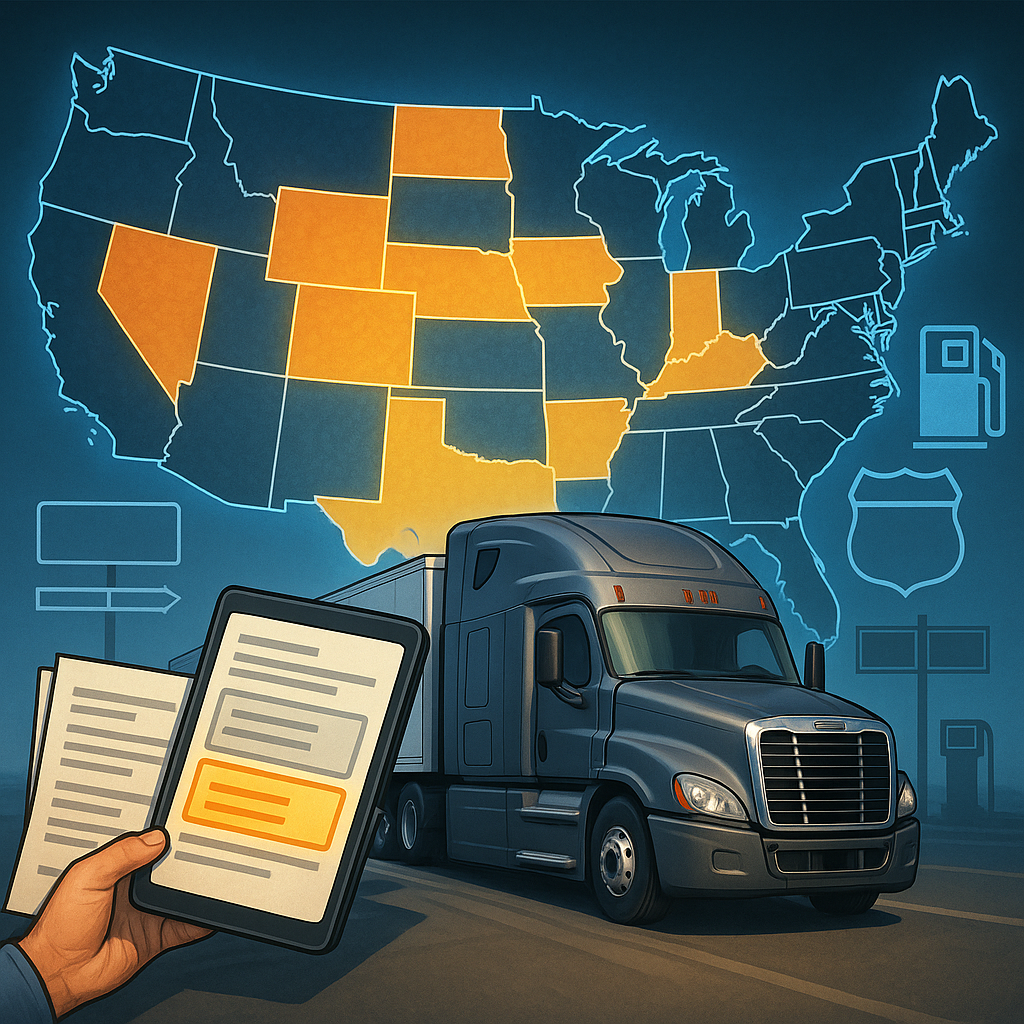If you’re in commercial trucking, chances are you’ve heard the term temporary trip permit tossed around—but understanding what are the rules on temporary trip permits is a different story. They’re not just a formality—they’re a legal requirement that can either keep your operation rolling or shut you down with penalties and delays. The challenge? The rules change depending on which state you’re rolling through.
At Reliable Permit Solutions, we deal with this maze every day. Whether you’re hauling across state lines for a quick drop or maneuvering a short-term fleet deployment, knowing what are the rules on temporary trip permits is crucial for staying compliant and avoiding major disruptions.
Let’s break it down.
Validity Period: What Are the Rules on Temporary Trip Permits Duration?
First things first—how long are these permits valid? That depends. Most states issue temporary trip permits for a window ranging from 72 hours to 10 days. But don’t get comfortable—once that clock starts ticking, there’s little room for error. If your haul hits a delay, you’re not guaranteed an extension. In most jurisdictions, permits are non-renewable. This is why trip planning and proper documentation are essential. At Reliable Permit Solutions, we always advise clients to confirm permit duration before finalizing delivery timelines.
Vehicle Limitations: What Are the Rules on Temporary Trip Permits Coverage?
Temporary trip permits are not a one-size-fits-all. If you’re wondering what are the rules on temporary trip permits for different vehicle types, the answer lies in gross vehicle weight and registration status. Generally, these permits apply to unregistered commercial vehicles temporarily operating in a state where they aren’t licensed. But some states impose restrictions based on axle count, freight type, or vehicle configuration. Knowing what’s allowed is non-negotiable—especially if you’re running oversized loads.
Route Restrictions: Where Can You Go?
The rules on temporary trip permits restrictions vary, but many states require you to stick to designated routes or highways. Veering off-course—even unintentionally—could result in a compliance violation. GPS might help with directions, but it won’t help you stay legal. Many permits also exclude travel during peak congestion hours, holidays, or severe weather warnings. Reliable Permit Solutions flags these limitations upfront so your drivers aren’t blindsided mid-route.
What Are the Rules on Temporary Trip Permits Operations?
Temporary trip permits aren’t a green light for unlimited activity. They’re intended for specific, pre-approved operations—such as one-time deliveries, out-of-state vehicle transfers, or limited-time events. Transporting hazardous materials? You’ll likely need additional authorizations. Every permit is issued with explicit usage parameters, and ignoring them could lead to fines or even permit revocation.
Compliance Essentials: Paperwork You Can’t Skip
One of the most overlooked aspects of what are the rules on temporary trip permits compliance is documentation. Permits must be kept in the cab and readily accessible during inspections. You’ll also need to carry backup documentation like vehicle registration, insurance, and driver credentials. States like California and New York are particularly strict—so if your truck gets flagged and you’re missing a single document, expect downtime.
Enforcement in the Real World: What Are the Rules on Temporary Trip Permits Inspections?
Inspections are no joke. If you’re not compliant, you’re not moving. Officers at weigh stations, border crossings, and random checkpoints will check your permit against your route, time of travel, and vehicle details. Any inconsistencies? That could mean immediate fines or vehicle impoundment. That’s why Reliable Permit Solutions ensures that every detail—down to the mile—is triple-checked before you hit the road.
What Happens When You Violate the Rules?
Violating what are the rules on temporary trip permits can cost you hundreds to thousands in fines. Some states also add points to the driver’s record or suspend operating privileges. For carriers, these violations can impact safety ratings and lead to higher insurance premiums. The bottom line? It’s more expensive to fix a mistake than to get it right the first time.
The Wildcard: State-to-State Differences
Perhaps the most frustrating aspect of what are the rules on temporary trip permits is that no two states are alike. A permit valid in Texas might be irrelevant in Oregon. Some states allow digital permits, while others still require printed copies. There’s no centralized playbook—only deep regulatory knowledge and real-time tracking. That’s why fleets nationwide turn to Reliable Permit Solutions. We’re not guessing—we know every state’s playbook.
Best Practices to Stay Compliant
So how do you stay on top of all this?
- Plan early. Secure your permit before wheels turn.
- Confirm coverage. Know which vehicle, route, and duration are allowed.
- Stay organized. Keep physical and digital documentation updated.
- Use experts. Let professionals like Reliable Permit Solutions handle the legwork so you don’t miss anything.
Final Thoughts
Understanding what are the rules on temporary trip permits isn’t just good business—it’s essential risk management. Between state-by-state variations, strict enforcement, and tight validity windows, there’s zero margin for error. That’s why Reliable Permit Solutions exists—to guide carriers through this complex landscape and keep freight moving without hiccups. If you’re not 100% sure you’re in compliance, you’re taking a gamble.
Let’s keep your fleet legal, compliant, and on the road.

